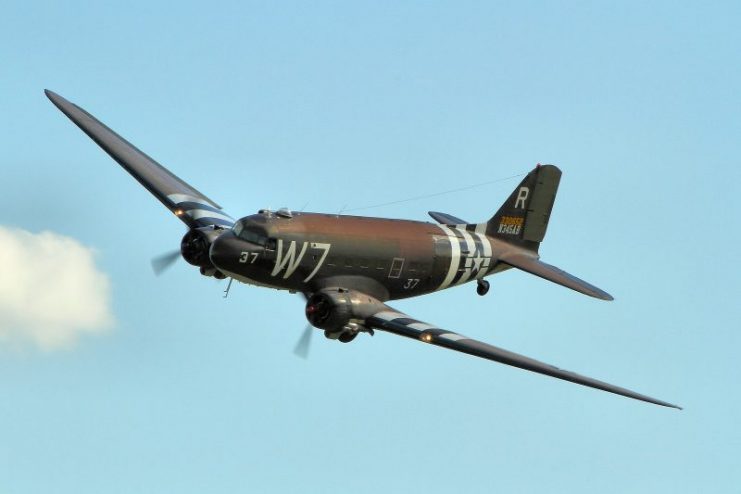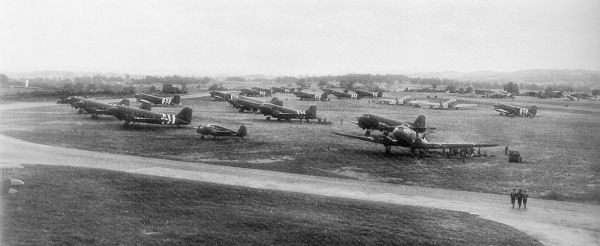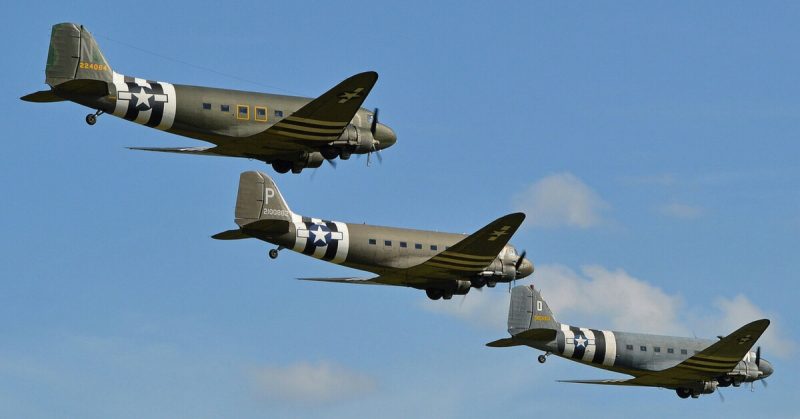A C-47 warplane called “That’s All, Brother” led over 800 other C-47s loaded with paratroopers into Normandy for the D-Day invasions that led to the end of World War II.
For 70 years after that historic flight, the plane’s whereabouts were unknown. Then, in 2015, a US Air Force historian unexpectedly came across the aircraft at the Basler Turbo Conversions junkyard in Oshkosh, Wisconsin. He came across the plane while doing research on Colonel John Donalson, who was the pilot of “That’s All, Brother” on that flight.
“That’s All, Brother” was owned by fifteen different owners after WWII before Basler purchased it and began their restoration.
The Commemorative Air Force is a non-profit organization that works to preserve historic aircraft. They have taken on the project of restoring this C-47. In only thirty days, the group was able to raise $380,000 to offset the expenses of the project.Stephan Brown is the president of the Commemorative Air Force. He estimates that the entire restoration will take $1 million to $1.5 million to complete.

So far, the group working on the plane has spent over 22,000 hours on the restoration project. Recently, they tested the engines for the first time. In spite of a leaky hydraulic system, the test was considered a major achievement.If possible, the team would like to complete the project in time to fly the plane for the 75th anniversary of D-Day on June 6, 2019. The expectation is for the plane to go on a European tour in 2019 and then return the US.
The Commemorative Air Force calls itself the largest flying museum in the world. Some of their planes are among only two or three of their kind known to still exist in the world. The planes are flown by members and volunteers known as Colonels. The CAF makes the planes available for events, fly-overs and rides. The CAF has managed to preserve at least one of every aircraft the US flew during WWII. Their plan is to have “That’s All, Brother” fit to fly for another 75 to 100 years.
The C-47 was a modified Douglas DC-3. Also known as the Skytrain or the “Gooney Bird”, the plane was the Air Force’s choice for their standard transport carrier. When used as a troop transport, like it was on D-Day, it could hold 28 soldiers in full combat gear. More than 10,000 were built for use in WWII. Eisenhower called it one of the most important pieces of equipment in the war.

The American airborne units had three major objectives in the D-Day invasions. Firstly, they wanted to control the routes that linked the beaches to the inland. Secondly, they were to hold the road junctions and tactically important locations. Thirdly, they needed to control the only two bridges crossing the river Merderet and destroy four bridges across the river Douve.
The paratroopers on the “That’s All, Brother” would likely have been “pathfinders”, whose mission was to mark the drop zones and landing sites among the marshes of Normandy. Failure of paratroopers and planes to find safe places to land in the marshes would lead to heavy losses for the Allies. The most pessimistic of forecasts called for 50% losses among paratroopers.
Operation Albany began at 12:20 in the morning on the 6th of June, when the 101st Airborne Division began dropping pathfinders into France. “That’s All, Brother” was the first plane in on that mission. The yellow letters read “That’s All Brother” — brother as in Hitler — a statement of confidence that the reign of the Third Reich was about to end.
The invasion caught the Germans off guard and began the Allies march to Berlin and the eventual surrender of the Germans.
